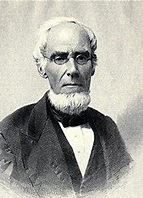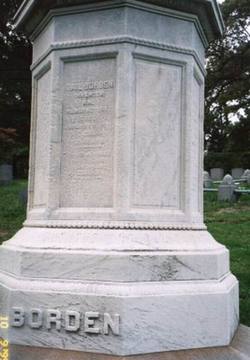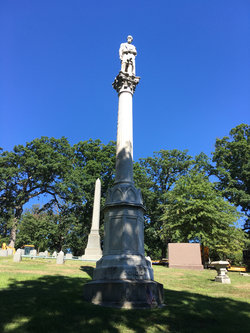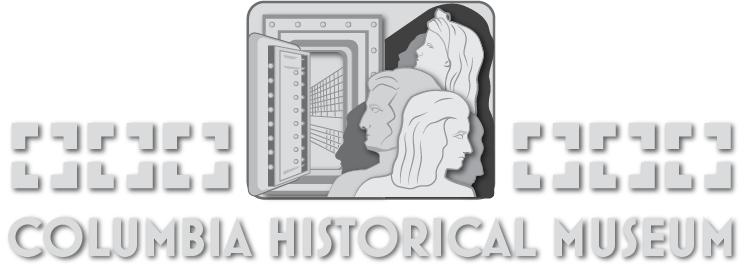![]()
By Tracy Gupton
Columbia Historical Museum
Newspaper publisher, inventor, surveyor, businessman, cattleman, schoolteacher and early Texas historical figure. Gail Borden Jr. checks all the boxes for accurate descriptions of his memorable life.
Though his 72 years were spent entirely in the 19th century, Borden’s milk products are still sold in grocery stores around the world. His ties to the West Columbia and East Columbia area involve the Telegraph and Texas Register newspaper, which was published in Columbia between August 2, 1836, and the end of April in 1837.
Gail Borden Jr. was born in Norwich, New York, on November 9, 1801, the son of Gail Borden Sr. (1777-1863) and Philadelphia Wheeler Borden (1780-1828). At the age of 13, young Gail and his family moved to Covington, Kentucky, where Gail was schooled in surveying by his Dad.
As an adult, Gail helped plot the towns of Houston and Galveston in the early days of Texas when it was a colony in Mexico. He collaborated on drawing the first topographical map of Texas in 1835. Before he arrived in Texas at Galveston Island at the end of 1829, Gail Borden Jr. received his only formal schooling in Indiana when his family moved from Kentucky to New London, Indiana, in 1816.
In 1822, Gail and his brother Thomas moved from Indiana to Amite County, Mississippi. Gail worked as a schoolteacher in Bates and Zion Hill, Mississippi, and was the county surveyor in Liberty, Mississippi, for seven years.
In his early days in Texas, Gail surveyed and raised cattle in what is today Fort Bend County. He eventually became Stephen F. Austin’s primary land surveyor. Leaving his steady job as a surveyor in Liberty, Mississippi, was made easier when being lured to the Mexican colony of Texas by his father and brother John who had already settled there. His mother had died of yellow fever in Nashville, Tennessee, the year before Gail Borden Sr. and John Borden decided to make the long trek to Texas.

Gail Borden Jr. and his brother John, with no previous newspaper experience, published one of the first newspapers in Texas when they put out the maiden issue of the Telegraph and Texas Planter on October 10, 1835, in partnership with Joseph Baker. The trio based their newspaper in San Felipe de Austin, which was centrally located among the colonies in Eastern Texas.
Baker also had no previous printing experience but was well-informed on the Texas-Mexican situation which had all of the Texas colonists hungry for information pertaining to strong rumors circulating that the Anglo Texans were plotting a revolution to free themselves from Mexican rule. As editor of the newspaper, Gail Borden Jr. soon changed the name of the paper to Telegraph and Texas Register about the same time his brother John left to join the Texian Army and his other brother Thomas Borden took John’s place as a co-owner.
The early format of the Bordens’ newspaper was three columns to a page with a total of eight pages. Issues of these newspapers from the waning days of Texas being a Mexican colony are collectors’ items today, with few of them on display in museums around the Lone Star State.
As the Mexican Army moved continually further east into the Texas colonies, the Telegraph and Texas Register was soon the only newspaper in Texas still operating. Their 21st issue was published on March 24, 1836, and contained the list of names of Texans who had died at the Battle of the Alamo. On March 27th, the Texas Army reached San Felipe, carrying word that the Mexican Army’s steady advance was rapidly approaching.

The Borden brothers dismantled their printing press at San Felipe and brought it with them as they evacuated on March 30th, retreating to Harrisburg. While in the process of printing a new issue of their paper, Mexican soldiers arrived on April 14th and seized the Bordens’ press. The soldiers threw the type and printing press into Buffalo Bayou and arrested Gail and Thomas Borden.
It is rumored that Gail Borden Jr. designed the Baker’s San Felipe flag that was flown in the Battle of San Jacinto on April 21, 1836. After Sam Houston’s Texian Army defeated the Mexican Army under the leadership of Mexico President and General Antonio Lopez de Santa Anna at San Jacinto, the Republic of Texas was born and the shackles of Mexican rule had been thrown off. In the summer of 1836 Texas was now its own country.
The Bordens published their 23rd issue of the Telegraph and Texas Register in Columbia on August 2, 1836, using a new printing press purchased in Cincinnati after the war with Mexico reached its bloody conclusion. The Bordens expected Columbia to flourish as the new capital of the Republic of Texas but, instead, the First Texas Congress chose to relocate the republic’s capital to the new city of Houston where Gail Borden Jr. played a big role in surveying around Buffalo Bayou.
Gail and Thomas Borden eventually relocated their newspaper’s base to Houston, leaving Columbia behind, and published the first issue of the Telegraph and Texas Register in Houston on May 2, 1837.
Both Borden brothers sold their interests in the newspaper later in 1837 and Gail Borden Jr. moved on to pursue other interests. In the 1840s he began to experiment with disease cures and mechanics. His wife Penelope Mercer Borden died of yellow fever on September 5, 1844, the same ghastly disease that had taken Gail’s mother from him in Nashville 16 years earlier.
Gail Borden Jr. began experimenting with beef processing in 1849, developing a dehydrated beef product known as the “meat biscuit,” that won Borden the Great Council Medal at the 1851 London World’s Fair. The same year Borden set up a “meat biscuit” factory in Galveston, his large financial investment into this venture proved a bust when people not only complained about the taste and texture, but the U.S. Army (which had purchased large quantities of Borden’s meat biscuits for soldiers) reported they were making too many soldiers ill.
Borden had to file for bankruptcy protection in 1852 due to much of his fortune being squandered on his constant experimenting. But he soon found success with his invention of condensed milk. He learned to reduce milk without scorching or curdling it. Although his first two factories established to manufacture condensed milk failed, Borden finally produced a usable milk derivative that was long lasting and needed no refrigeration, with his third factory, built with new partner, wealthy financier Jeremiah Milbank in Wassaic, New York.
In 1856, after three years of refining his model, Gail Borden Jr. received the patent for his process of condensing milk by vacuum. By 1858, Borden’s sweetened condensed milk, sold as Eagle Brand, had gained a reputation for purity, durability and economy.

The outbreak of the Civil War in 1861 created a large demand for condensed milk. As the Civil War raged on, Borden built many new factories to meet the huge demand for his product. In 1862 he patented the condensing of juice from fruits.

Gail Borden Jr. died on January 11, 1874, in Borden, Texas, a town bearing his name in Colorado County. His body was shipped by private rail car to New York City where he was buried in Woodlawn Cemetery in the Bronx. He was married three times and was the father of six children.
Following his death, Borden County in rural West Texas, a place Gail Borden Jr. had never been, was named for him in 1876. The county seat of Borden County is the town of Gail. As of the 2020 census, Borden County’s population of 631 was the fifth-least populous county in Texas.


Great article! So overlooked for so many years. Thank you, Tracy